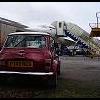Galvanising A Whole Mini?
#16

Posted 22 January 2010 - 09:10 PM
tho it would cool on an MOT ramp lol
#17

Posted 22 January 2010 - 09:14 PM
#18

Posted 22 January 2010 - 09:25 PM
Pete
#19

Posted 22 January 2010 - 09:27 PM
#20

Posted 22 January 2010 - 10:15 PM
pete:
do you have any more info ? thanks
#21

Posted 22 January 2010 - 10:52 PM
#22

Posted 23 January 2010 - 10:31 AM
Have a look at these guys!!!
http://www.surfacepr...CFVmX2AoddBmI0A
I would go with these guys. It is the same process we use in Swindon at the Honda factory on all cars before spraying. I would be very tempted to get mine up there and done once all the body work is finished before the final paint job. We don't have any problems from the chemical process warping or deforming the body.
#23

Posted 23 January 2010 - 11:21 AM
#24

Posted 23 January 2010 - 11:32 PM
#25

Posted 23 January 2010 - 11:39 PM
iv seen on "how its made" them dipping cars in galv in america thats why i thaught....mini ! lol
#26

Posted 24 January 2010 - 01:00 AM
The main problem is the mini shell is not designed for e-coat, in terms of drainage as its going through the tanks.
Mini shells were designed to be dipped right from the start of production. BMC (or rather Austin) were one of the first manufacturers to dip cars using their unique 'Rotodip' process which the Mini shell is designed for. That's what the large apertures in the bulkheads are meant for.
Heritage shells and panels are made from galvanically coated steel, just like modern cars. The complete shells are then also given an all over coating with a poly primer. They still rust. Anything will rust if the protection is compromised and as said above, galv is very easy to scratch off in the wrong conditions.
#27

Posted 24 January 2010 - 02:38 AM
saw this earlier today..
CkTDCOQB-rg
dipping section starts from 4m00s
#28

Posted 24 January 2010 - 01:32 PM
You could just leave it.. for 50 years.! and it'd go all greeeeen
(alas the waiting 50 years would be needed)..
#29

Posted 24 January 2010 - 01:48 PM
The only real way to galvanise a shell id build it from the very start with galv steel.
One other option which is doable, but perhaps time consuming is to tin the whole shell using tinning paste and a blow lamp. you then have the added problem of removing al the flux afterwards. in reality though, you only really need to tin all the areas where panels are joined. The Wax does the closed sextions and does a very good job
#30

Posted 24 January 2010 - 01:49 PM
0 user(s) are reading this topic
0 members, 0 guests, 0 anonymous users
























